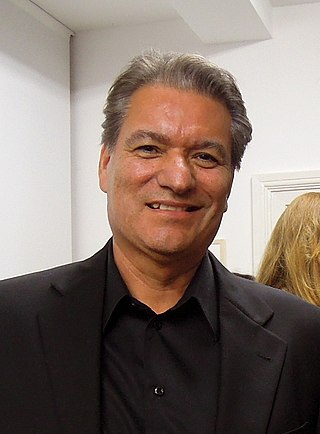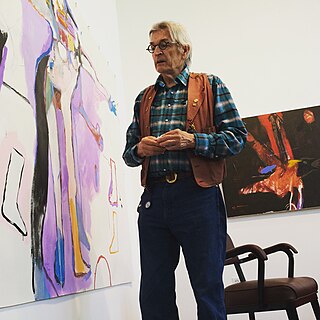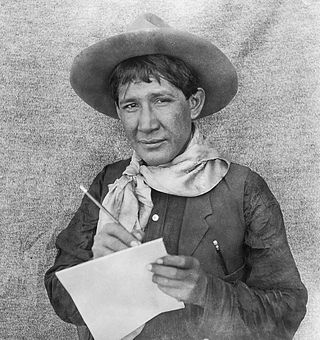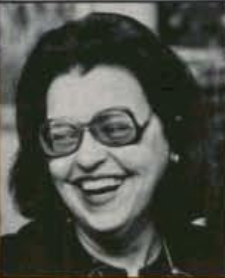Related Research Articles

Achomawi are the northerly nine bands of the Pit River tribe of Palaihnihan Native Americans who live in what is now northeastern California in the United States. These 5 autonomous bands of the Pit River Indians historically spoke slightly different dialects of one common language, and the other two bands spoke dialects of a related language, called Atsugewi. The name "Achomawi" means river people and properly applies to the band which historically inhabited the Fall River Valley and the Pit River from the south end of Big Valley Mountains, westerly to Pit River Falls. The nine bands of Achumawi lived on both sides of the Pit River from its origin at Goose Lake to Montgomery Creek, and the two bands of Atsugewi lived south of the Pit River on creeks tributary to it in the Hat Creek valley and Dixie Valley.

The Maidu are a Native American people of northern California. They reside in the central Sierra Nevada, in the watershed area of the Feather and American Rivers and in Humbug Valley. In Maiduan languages, maidu means "man".

Dan Namingha is a Hopi painter and sculptor. He is Dextra Quotskuyva's son, and a great-great-grandson of Nampeyo. He is a member of the Hopi-Tewa member of the Hopi Tribe. He lives in Santa Fe, New Mexico.
Kevin Red Star is a Native American painter from Montana. He is a member of the Crow Tribe of Montana.
Mateo Romero is a Native American painter. He was born in Berkeley, California, and is a member of the Cochiti Pueblo.

Harry Eugene Fonseca was a Nisenan Native American artist, and illustrator. He was an enrolled citizen of the Shingle Springs Band of Miwok Indians.
Mario Martinez is a Native American contemporary abstract painter. He is a member of the Pascua Yaqui Tribe from New Penjamo, the smallest of six Yaqui settlements, in Arizona. He currently lives in New York City.

Helen Hardin was a Native American painter. She started making and selling paintings, participated in the University of Arizona's Southwest Indian Art Project and was featured in Seventeen magazine, all before she was 18 years of age. Creating art was a means of spiritual expression that developed from her Roman Catholic upbringing and Native American heritage. She created contemporary works of art with geometric patterns based upon Native American symbols and motifs, like corn, katsinas, and chiefs. In 1976 she was featured in the PBS American Indian artists series.
Kay WalkingStick is a Native American landscape artist and a member of the Cherokee Nation. Her later landscape paintings, executed in oil paint on wood panels often include patterns based on Southwest American Indian rugs, pottery, and other artworks.

Richard Elmer "Rick" Bartow was a Native American artist and a member of the Mad River band of the Wiyot Tribe, who are indigenous to Humboldt County, California. He primarily created pastel, graphite, and mixed media drawings, wood sculpture, acrylic paintings, drypoint etchings, monotypes, and a small number of ceramic works.

Linda Lomahaftewa is a Hopi and Choctaw printmaker, painter, and educator living in Santa Fe, New Mexico.
Stephen Mopope (1898–1974) was a Kiowa painter, dancer, and Native American flute player from Oklahoma. He was the most prolific member of the group of artists known as the Kiowa Six.

Ruthe Blalock Jones is a Delaware-Shawnee-Peoria painter and printmaker from Oklahoma.

Earnest Spybuck was an Absentee Shawnee Native American artist, who was born on the land allotted the Shawnee Indians in Indian Territory and what was to later become Pottawatomie County, Oklahoma, near the town of Tecumseh. M. R. Harrington, an archaeologist/anthropologist, was touring the area documenting Native Americans, their history, culture and living habits. Interested in the religious ceremonies of the Shawnee which included the use of peyote, Harrington had ventured to the Shawnee Tribal lands. There he learned of Earnest Spybuck's artistic work and encouraged Spybuck in his endeavors. While Spybuck's work was obviously art, Harrington saw that he was illustrating detailed scenes of ceremonies, games, and social gatherings which could be used to illustrate many anthropological publications. Spybuck's work was received positively by both Native American and non-native artistic communities. Many of his works are now held by the Smithsonian's National Museum of the American Indian.
Frank Day, also Ly-dam-lilly was a Native American artist from California.

Bob Haozous is a Chiricahua Apache sculptor from Santa Fe, New Mexico. He is enrolled in the Fort Sill Apache Tribe.
America Meredith is painter, curator, educator, and editor of First American Art Magazine. Based in Norman, Oklahoma, her work is known for its humorous approaches to social and environmental issues and for combining Native American and pop imagery.
Dugan Aguilar (1947–2018) was a Native American photographer whose work has been exhibited by major museums. He is "among the first Native photographers to document Native life in Yosemite and California through his own vision."

Tonita Peña born as Quah Ah but also used the name Tonita Vigil Peña and María Antonia Tonita Peña. Peña was a renowned Pueblo artist, specializing in pen and ink on paper embellished with watercolor. She was a well-known and influential Native American artist and art teacher of the early 1920s and 1930s.

Valjean McCarty Hessing was a Choctaw painter, who worked in the Bacone flatstyle. Throughout her career, she won 9- awards for her work and was designated a Master Artist by the Five Civilized Tribes Museum in 1976. Her artworks are in collections of the Heard Museum of Phoenix, Arizona; the Philbrook Museum of Art in Tulsa, Oklahoma; the Southern Plains Indian Museum in Anadarko, Oklahoma; and the Wheelwright Museum of the American Indian of Santa Fe, New Mexico, among others.
References
- 1 2 "Stretching the Canvas: Eight Decades of Native Painting". National Museum of the American Indian. Retrieved 7 March 2021.
- ↑ https://s3.amazonaws.com/PEM_artscape/pdf/judith_lowry_reference-03.pdf [ bare URL PDF ]
- 1 2 Indyke, Dottie (September 29, 2005). "Native Arts | Judith Lowry".
- ↑ Let us not forget the Nisenan people, Judith Lowry, 2012
- 1 2 "Full Disclosure: Autobiographical paintings continue a storytelling tradition". PEM Connections. November–December 2008.
- 1 2 "Judith Lowry". Images of Identity. University Library Gallery, at CSU Sacramento. 2004.
- 1 2 Evans, Lara. "Judith Lowry". Institute of America Indian Art.
- ↑ Lowry, Judith; Lippard, Lucy R.; Harlan, Theresa (1999). Illuminations: Paintings by Judith Lowry . Santa Fe: Wheelwright Museum of the American Indian. p. 9.
- ↑ "Nevada City artist".
- ↑ Victoria Dalkey: Judith Lowry's show at Pence Gallery depicts aspects of Native California - Theater - The Sacramento Bee Archived 2014-03-23 at the Wayback Machine
- ↑ "Collections Search". National Museum of the American Indian. Smithsonian Institution. Retrieved 28 June 2014.
- ↑ "My Aunt Viola". Native American Art. Peabody Essex Museum. Retrieved 28 June 2014.